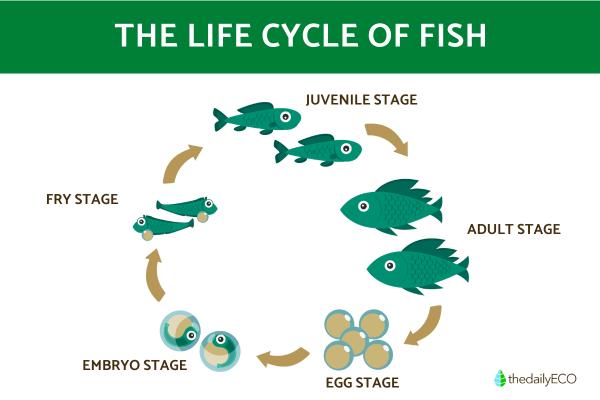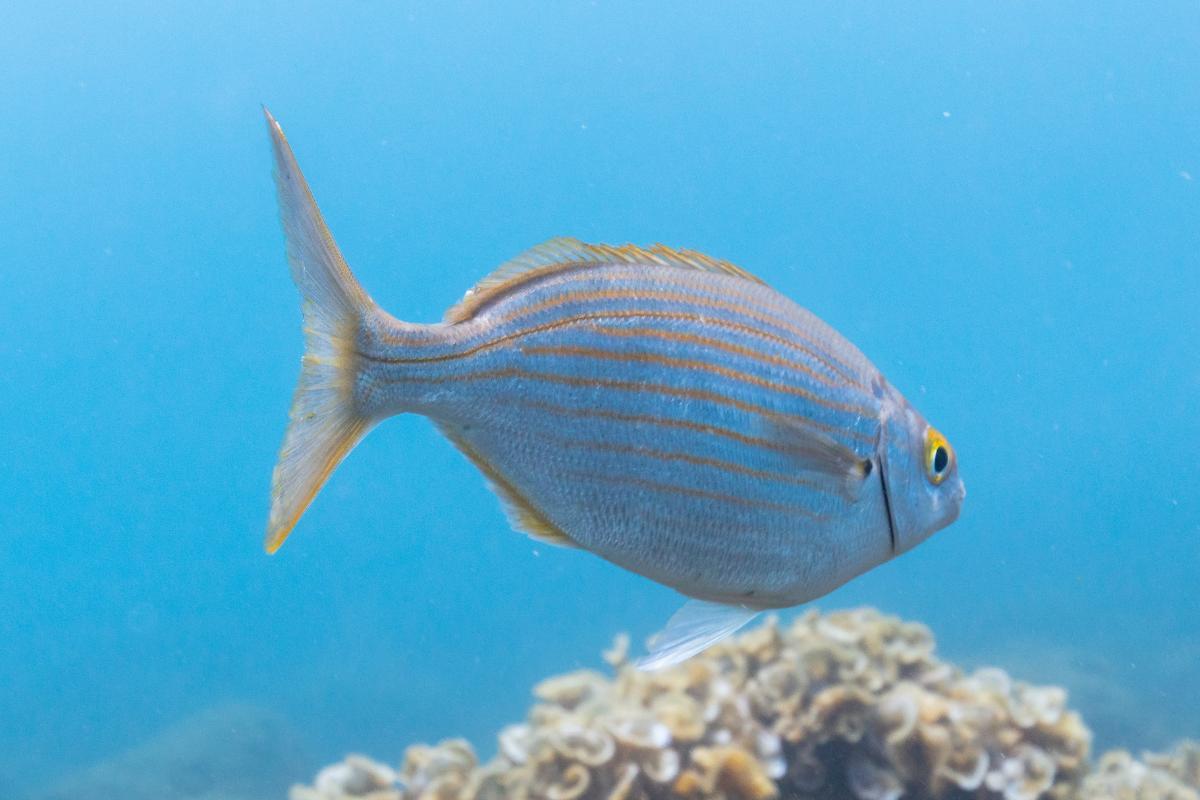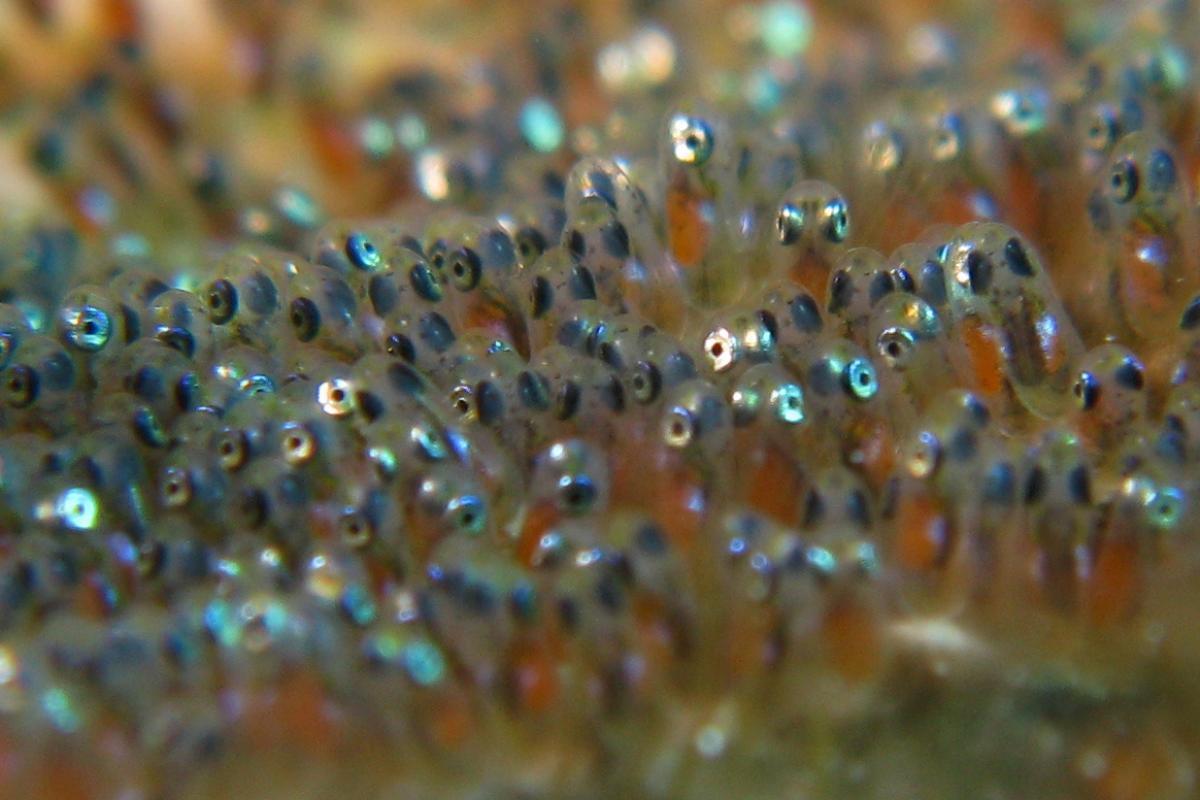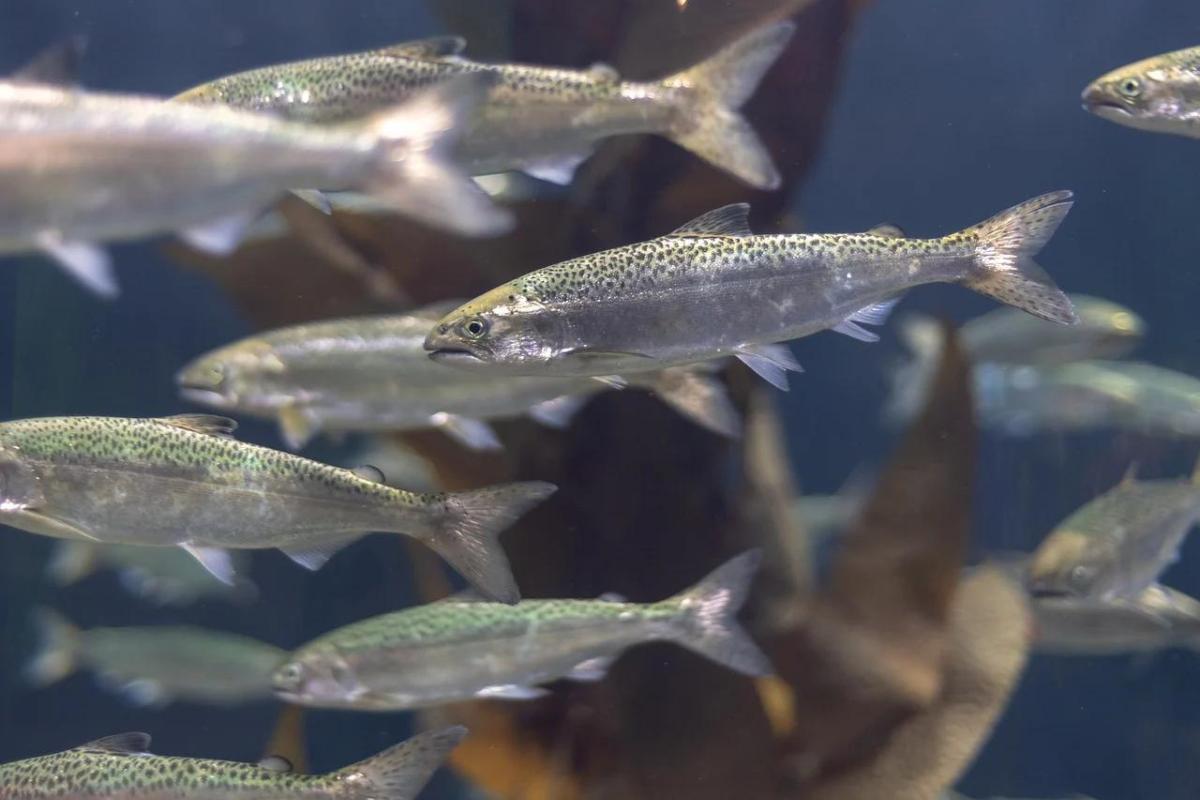How Do Fish Grow? - Fish Life Cycle


Fish are among the most diverse and adaptable creatures in the aquatic world, undergoing a life cycle that allows them to thrive in oceans, rivers, and lakes. From the moment they hatch as tiny larvae to their transformation into fully grown adults, fish go through several distinct stages of development that ensure their survival and reproduction. Understanding the fish life cycle is essential for marine conservation, fisheries management, and even aquarium care.
In this article by thedailyECO, we’ll explore the key stages of the fish life cycle, including egg fertilization, larval growth, juvenile adaptation, and adult reproduction.
Adult stage
The adult stage initiates the reproductive cycle in fish, where a diversity of strategies unfolds across species.
Fish reproductive systems range from gonochoristic (separate male and female sexes) to hermaphroditic, where individuals possess both reproductive tissues. This can happen either simultaneously producing eggs and sperm, or sequentially changing sex during their lifetime from male to female (protandrous) or female to male (protogynous).
These reproductive systems support various mating behaviors.
- Promiscuous: engage with multiple partners without selectivity, typically during mass spawning events with minimal parental investment.
- Polygamous: form multiple mating relationships with one sex partnering with several of the opposite sex. Monogamous: establish pair bonds, often correlating with substantial parental care.
Fertilization methods connect directly to these mating systems. Most fish employ external fertilization, releasing gametes into water simultaneously.
Some species evolved internal fertilization, where males transfer sperm directly into females using specialized structures. In certain species, externally fertilized eggs are collected in the mouth by a parent for protection during development.
Following fertilization, embryonic development proceeds through one of three pathways:
- Oviparous fish: release eggs into the environment for external development.
- Viviparous fish: nurture embryos internally with direct maternal nutrition.
- Ovoviviparous fish: retain fertilized eggs within the mother's body while embryos rely primarily on yolk nutrients.
This interconnected suite of reproductive adaptations has allowed fish to colonize diverse aquatic environments worldwide, with each strategy offering specific advantages under different ecological conditions.

Egg stage
External fertilization, the most common reproductive strategy in fish, leads directly to the egg phase. Female fish select specific spawning locations based on their species' ecological adaptations.
Spawning sites vary strategically across species. Some females release eggs into the water column, while others deposit them on substrates, in bubble nests, or in carefully constructed nests among stones, plants, or on the seafloor. This spawning site selection directly influences egg development and survival.
Egg characteristics correlate with habitat and lifestyle:
- Benthic fish: produce larger, adhesive eggs that attach to bottom structures rather than floating away.
- Open-sea fish: release tiny, buoyant eggs that deliberately drift with currents as part of the ichthyoplankton. This floating adaptation appears exclusively in marine environments, as no freshwater fish eggs possess this buoyancy.
The physical structure of fish eggs includes a protective outer membrane called the chorion and a small opening called the micropyle that allows sperm entry during fertilization. Some species incorporate additional protective elements like toxins or mucous coatings that deter predators or prevent fungal infections.
Males typically release sperm simultaneously with egg deposition, though some species exhibit asynchronous fertilization where gamete release lacks precise coordination. Once fertilized, the egg provides the complete environment for embryonic development, with the yolk sac containing all necessary nutrients to sustain growth until hatching.
Egg production varies dramatically between species, reflecting different reproductive strategies. A single female cod may release 4-6 million eggs in one spawning event, while salmon produce several thousand larger eggs, and some cichlids lay only a few dozen eggs that receive extensive parental care.
Parental care varies significantly across species, occurring in only 30% of fish families and appearing more frequently in freshwater than marine environments. This care encompasses egg incubation and defense against predators.
Mortality during the egg stage is exceptionally high, particularly for broadcast spawners. In species without parental care, survival rates often fall below 1%, with predation being the leading cause of egg loss.
While both parents may share these responsibilities, male-only parental care predominates in fish. This pattern contrasts with other vertebrate groups, where female or biparental care is more common.

Larval stage
When embryonic development completes, the fish enters its larval stage. This is a critical period characterized by extraordinary vulnerability and rapid development. Most larvae emerge measuring approximately 1 millimeter, with translucent bodies and minimal mobility.
Upon hatching, larvae initially rely on nutrients from their attached yolk sac, which provides essential energy during the first hours to days of life. This temporary food source allows larvae to survive while developing the structures necessary for active feeding. As the yolk depletes, larvae must transition to external feeding or face starvation.
The larval period spans from 7 to 120 days depending on species, temperature, and habitat conditions. This stage represents the most perilous period in the fish life cycle, with mortality rates exceeding 99% across most species. Survival challenges include predation, starvation, unfavorable currents, and environmental fluctuations.
Larvae undergo dramatic morphological changes during this phase. Their bodies develop specialized organs, fins take shape, skeletal structures ossify, and sensory systems become functional. This rapid development involves significant energy expenditure, requiring larvae to locate and consume suitable food particles soon after yolk absorption.
This is why feeding strategies evolve quickly during larval development. Initially, most larvae consume zooplankton or other microscopic organisms. Their small mouths and undeveloped digestive systems limit prey size, making food availability a critical factor in survival. Competition with other planktonic organisms further challenges their nutritional intake.
Larval dispersal patterns reflect species-specific adaptations. Many marine larvae drift passively with currents, potentially traveling hundreds of kilometers from spawning grounds. This dispersal mechanism facilitates gene flow between populations and colonization of new habitats. In contrast, freshwater larvae often remain in protected areas, using microhabitats that offer shelter from predators and currents.
Metamorphosis marks the transition from larva to juvenile, involving structural reorganization as the fish adopts characteristics appropriate for its adult habitat and lifestyle. During this transformation, many larvae undergo dramatic changes in body shape, fin structure, pigmentation, and sensory capabilities.
The larval stage represents an evolutionary compromise between producing many small, vulnerable offspring versus fewer, more developed young. The high mortality rate is counterbalanced by the vast number of larvae produced, ensuring that enough individuals survive to maintain population levels despite the numerous threats they face.

Fry stage
Larvae that survive the high-mortality early period develop into fry, entering an intermediate phase bridging the gap between larval and juvenile stages. During this transition, fish retain characteristics of both life stages. In other words, they are no longer true larvae but not yet fully formed juveniles.
Fry exhibit partially developed fins, incomplete scale formation, and transitional body proportions. Their anatomical development progresses significantly during this period, with fin rays extending, pigmentation increasing, and sensory capabilities enhancing. This stage represents a critical developmental window when species-specific characteristics become increasingly apparent.
Protective behavior dominates the fry phase. These young fish seek shelter among aquatic vegetation, coral formations, rock crevices, or algal beds, instinctively avoiding open waters where predation risk increases dramatically. This strategic sheltering enables them to conserve energy while completing their development in relative safety.
Fry refine their swimming techniques, improve predator avoidance responses, and enhance their ability to locate appropriate food sources. This learning period builds the behavioral foundation necessary for successful juvenile and adult life.
Feeding patterns also shift during the fry stage, with many species transitioning from consuming microscopic zooplankton to targeting larger prey items. Their expanding mouth size, improved vision, and developing digestive systems allow for greater dietary diversity. Some species begin exhibiting feeding specializations that will characterize their adult diet.
The duration of this stage varies significantly across species and environments. Temperature stands as the primary factor influencing development rate, with warmer conditions generally accelerating growth. Other factors including food availability, predator presence, and habitat complexity also affect how quickly fry progress to the juvenile stage.
Mortality decreases substantially compared to the larval phase but remains higher than in later life stages. Predation continues as the primary threat, though increasingly sophisticated escape responses and improved sensory capabilities provide greater survival chances than in earlier developmental stages.
Curious about how human fishing practices affect these fascinating life cycles? Explore our other article on responsible approaches to marine harvesting.

Juvenile stage
In species with internal fertilization, development follows a different trajectory, bypassing the external egg and larval stages entirely. These fish emerge from their mothers as fully-formed juveniles, having completed their early stages within the protected maternal environment. This reproductive strategy trades high offspring numbers for increased survival probability per individual.
The juvenile stage represents the period when fish possess all fundamental adult structures but lack sexual maturity and final body size. Physically, juveniles display species-specific characteristics including fin configuration, scale patterns, and basic coloration, though many species exhibit juvenile-specific color patterns that differ from adult coloration, which often serve protective functions through camouflage or mimicry.
Growth dominates the juvenile phase, with energy predominantly directed toward increasing body size rather than reproductive development. This period features the most intensive feeding behavior in the fish's lifetime, with juveniles consuming significantly higher proportions of food relative to their body weight.
Habitat is often different between juvenile and adult stages, with many species occupying distinct ecological niches during different life phases. This stage-specific habitat partitioning reduces competition for resources between age groups. Some juvenile fish form schools or aggregations in nursery habitats that offer protection and abundant food resources.
Behavioral development continues throughout the juvenile stage as fish refine their feeding techniques, predator avoidance strategies, and social interactions. Species with complex adult behaviors may exhibit practice or learning periods during the juvenile phase, particularly for reproduction-related behaviors that will become critical later.
The duration of the juvenile stage also varies widely across species, ranging from months to years. Water temperature, food availability, and population density all influence how quickly juveniles reach adult size and sexual maturity.
The transition to adulthood occurs when gonadal development completes and the fish produces viable gametes. This transition typically coincides with the fish approaching or reaching its species' characteristic size. Hormonal changes during this period trigger both physiological and behavioral shifts as the fish enters its reproductive phase, completing the life cycle and beginning the process anew.
Discover why many fish species choose to swim together after reaching adulthood in our other article about collective fish behavior.

If you want to read similar articles to How Do Fish Grow? - Fish Life Cycle, we recommend you visit our Wild animals category.
- Vásquez-Yeomans, L., Leyva-Cruz, E., & Valdez-Moreno, M. (2017). Eggs and larvae in the life cycle of fish. ECOfronteras, 22(1), 17–18.
- Conservation Biology Laboratory, Faculty of Sciences; ENES Mérida, Autonomous University of Mexico. (n.d.). Biological oceanography: Nekton. Retrieved from http://www.biocon.unam.mx/docencia/oceanografia-biologica/necton.pdf
- Bland, L. M., et al. (2019). The role of fish life histories in allometrically scaled food-web dynamics. Ecology and Evolution, 9(6), 3359–3370. https://doi.org/10.1002/ece3.4996
- Arevalo, E., Cabral, H., Villeneuve, B., & Lepage, M. (n.d.). Two-stage life histories in fish: The interaction between juvenile competition and adult performance. Retrieved from https://www.researchgate.net/publication/230726760_Two-Stage_Life_Histories_in_Fish_The_Interaction_Between_Juvenile_Competition_and_Adult_Performance
- Staab, K. L., Holzman, R., Hernandez, L. P., & Wainwright, P. C. (2014). Suction feeding across fish life stages: Flow dynamics from larvae to adults and implications for prey capture. Journal of Experimental Biology, 217(20), 3748–3757. https://doi.org/10.1242/jeb.113472
- Houde, E. D. (1983). The larval stages of fish. Environmental Biology of Fishes, 8(4), 315–317. https://doi.org/10.1007/BF00001061










